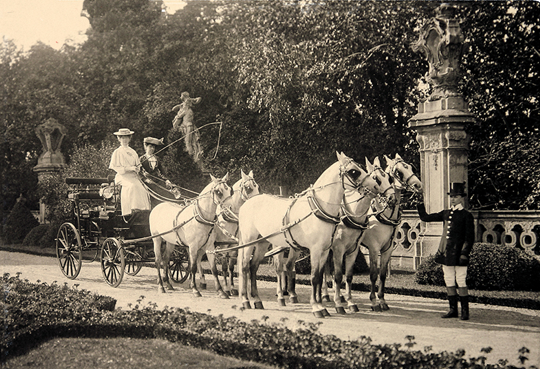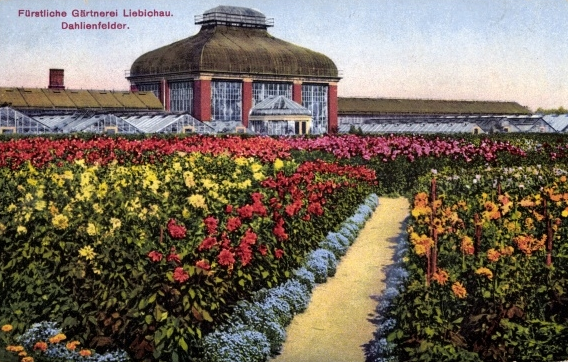


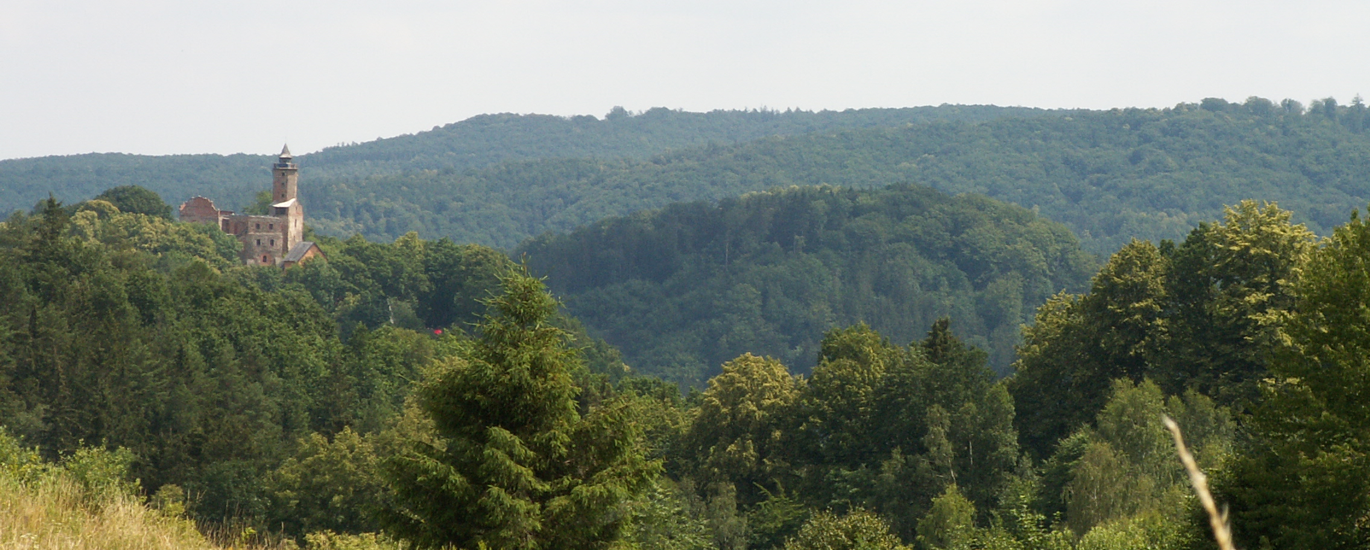
The Bardzkie Mountains are rarely visited by tourists and are regarded as a wild area; they have a well-marked trail system, but are a place only for self-supporting and well-equipped travellers. The entry point to this range is the village of Bardo Śląskie located about 70km south of Wrocław along road #8.
The Bardzkie Mts. are located between the Sowie Mts. and the Złote Mts. and enclose the whole area of the Kłodzko Valley and Kłodzko Land from the northern side, while their highest peak is Kłodzka Góra at 765m.
The most interesting tourist centres are Bardo Śląskie, with its Museum of Sacral Art, and Srebrna Góra, a paradise for lovers of old military monuments and fortresses. The town of Bardo Śląskie is currently famed of gingerbread and the renewing of its production. The tradition of gingerbread dates to medieval times. This is a place for hikers, bikers and walkers who want to escape from the bustling towns, and for those who wish to relax among the predominantly baroque art.
The Sowie Mts. seem almost designed for family downhill skiing and are fascinating for their long and mysterious history as the oldest part of both the Sudety Mts. and Poland geologically. They offer good snow conditions as well as accommodation in farmhouses in the countryside, a speciality of the region known as agrotourism. Agrotourism is living and relaxing in a farmhouse, which for city-dwellers and the overworked should provide a tranquillity far removed from everyday life. Here quality time can be spent with family, all while enjoying traditional home-made Polish cuisine made from the healthiest ingredients, such as fresh milk, cream, cottage cheese and eggs, fish, poultry, honey, home-made cakes, fresh fruits and vegetables direct from the source. In summer guests in such places can often go fishing or try horse riding.
This kind of accommodation is usually inexpensive, although the price does depend on the standard, which is often very high – some farmers even offer independent apartments or houses for rent. There is also the opportunity to ski cross-country from the Sowie Mts. massif through the Kamienne Mts. to the famous Andrzejówka Refuge or to neighbouring Wałbrzyskie Mountains with their old castles to see, both Grodno in the village of Zagórze Śląskie and the superb Książ near Wałbrzych.
For those interested in the history of the Second World War there are huge underground factories in the area. Those interested in military monuments must see the Reise complex in particular, which is located in the village of Walim, the massifs of Włodarz and Osówka. All complexes are accessible for underground tours and offer hours of exploration of the ideas of Adolf Hitler’s scientists and engineers. Why they built this underground complex of laboratories, factories and headquarters remains a mystery. Less sizeable, but no less grand, is the wooden church in Sierpnice.
The area’s largest towns are Dzierżoniów, Nowa Ruda, with its Mining Museum, Głuszyca, for Reise, the extraordinary Świdnica and the biggest post-industrial town, Wałbrzych. The Sowie Mountains possess a number of ski centres: Rzeczka, Sokolec, Łomnica, Mt. Wielka Sowa, Przełęcz Jugowska (przełęcz meaning pass) and Walim. The newest centre is located on the slopes of Mt. Rymarz and is known as Jugów Park. You need only a car and a map to navigate this most secretive range of mountains.
Visiting the USA for sandstone mountains is unnecessary when there is a whole range of them in Poland! In fact, the Stołowe Mts., or Table Mts., are the only range of their type in the whole of Europe. The highest peak is Szczeliniec Wielki at 919m, yet most notable are the range’s eye-catching rock formations, impressive vegetation and wildlife, which includes amphibians, reptiles and birds, all protected by the National Park (in Polish: Park Narodowy Gór Stołowych) and by several other strict nature reserves. Visitors are moved by the beauty of what seem to be towns made of stone, and by rock labyrinths, all carved solely by wind, sun and water. The main tourist centres are the wonderful spa resort of Kudowa Zdrój, whose beneficial mineral-rich waters are said to be good for heart diseases, Szczytna, Batorów, Radków, Karłów, Wambierzyce, Lewin Kłodzki, the health resort of Polanica Zdrój, whose waters are believed good for stomach disorders and ulcers, and the health resort of Duszniki Zdrój, host of the annual F.Chopin Festivals with waters reputedly of benefit for respiratory problems and asthma. Students can take part in educational tours, the Stołowe Mts. Educational Centre or at one of the technology museums, such as the 17th-century paper mill in Duszniki Zdrój; other visitors can see a fine selection of historical sites, such as Wambierzyce, Czermna or Pstrążna.
The area offers a variety of accommodation, from good hotels to lovely guest houses and is crisscrossed with a dense network of tourist trails, so coach tours, hiking and backpacking are common here. Biking on forest roads is also very popular.
Coloratura soprano Violetta Villas, a Las Vegas star in the 1960s who sang with such stars as Frank Sinatra, Barbra Streisand, Paul Anka and Eartha Kitt was born in Lewin Kłodzki. Her voice spanned over four octaves. She spurned opera for popular music and became a star in the entertainment industry for her multi-year vocal career. Violetta Villas died on December 5th, 2011 in Lewin Kłodzki at the age of 73.
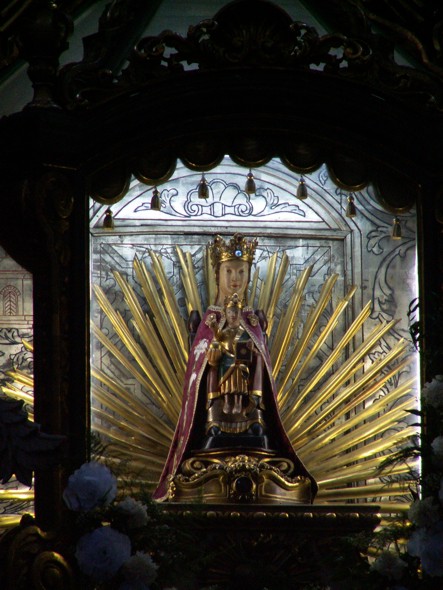


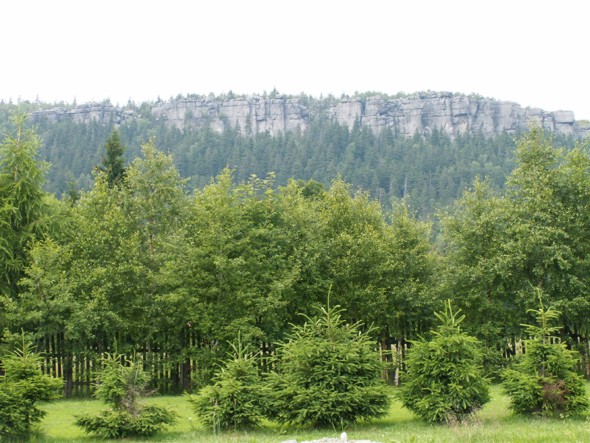




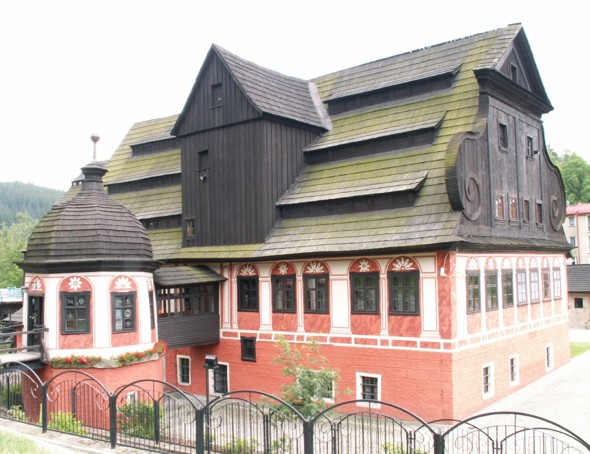

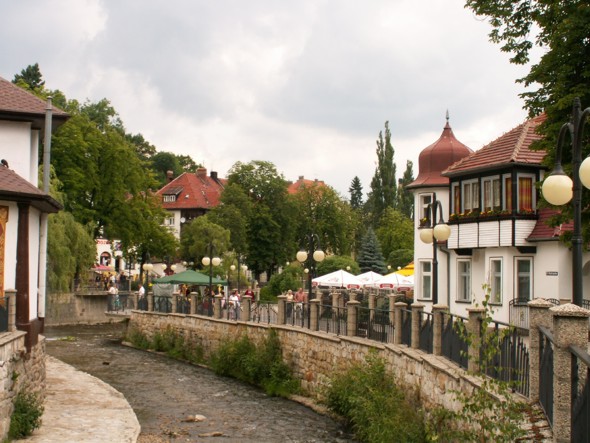
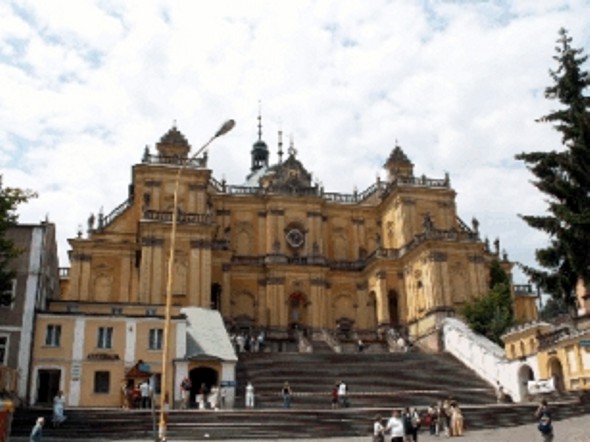
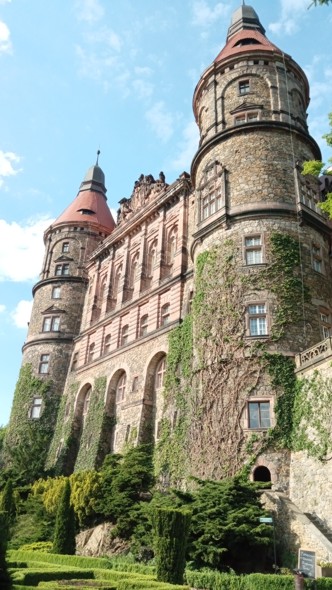
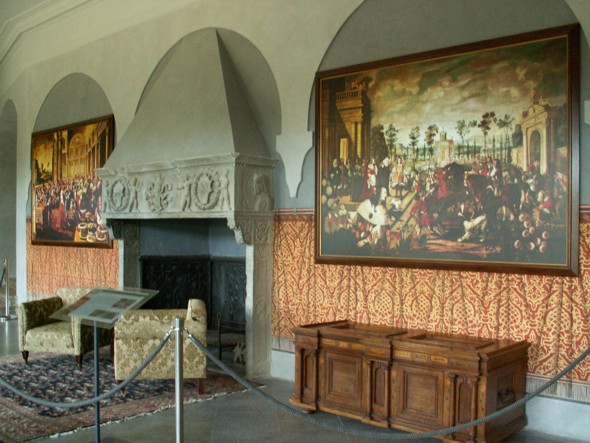
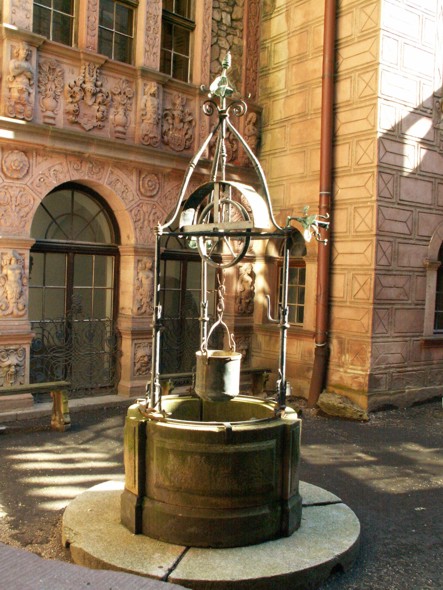


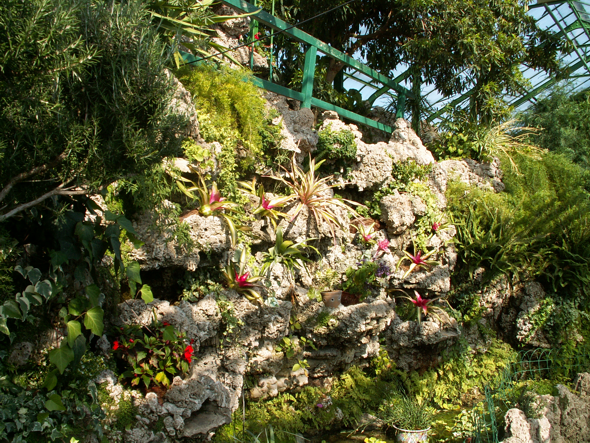
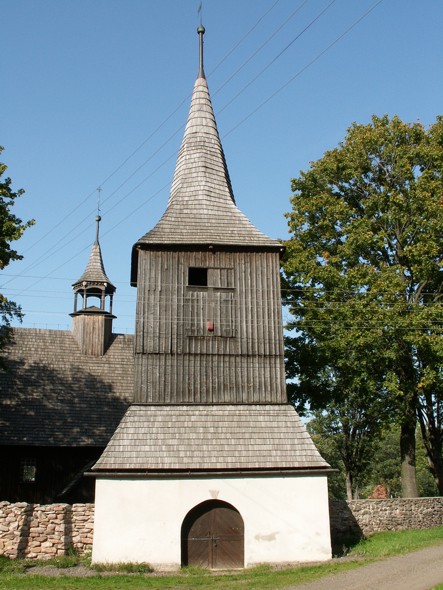
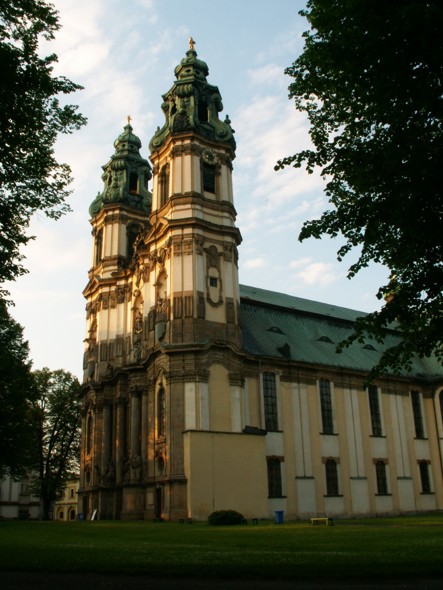

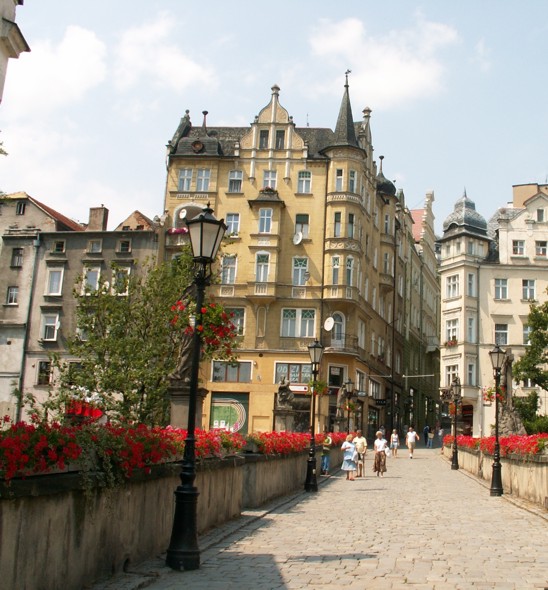

This range takes its name taken from the river Orlica and is home to Zieleniec, a small settlement situated about 800-900m above sea level. Managed by the authorities of a splendid spa-resort, Duszniki Zdrój, the usually sleepy Zieleniec wakes up in winter as it has a unique micro-climate with extraordinary conditions for downhill and cross-country skiing. In addition, it offers a great deal of varied accommodation for travellers of all kinds. Zieleniec, after Karkonosze, is the second skiing centre of the Sudety Mts. In winter you can reach Zieleniec by road #E67 leading to Kudowa Zdrój, after turning left onto a one-way road approaching the town of Międzylesie – snow chains for car wheels are recommended here, as is paying attention to road signs and police guidelines.
The largest towns in this area are Bystrzyca Kłodzka and Międzylesie, while Zieleniec also lies close to the best health resorts in Lower Silesia and indeed the whole of Poland: Kudowa Zdrój, Duszniki Zdrój and Polanica Zdrój. It is also a short distance to another famous mountain range, the Stołowe Mts., which form the second Lower Silesian National Park. Each of these spa towns has its own specialisation, history, character and cultural events. Visitors to Kudowa Zdrój may receive treatment for heart diseases, while arrivals in Duszniki Zdrój may be treated for pulmonary and upper respiratory tract problems and guests to Polanica Zdrój for digestive system disturbances, ulcers and stomach disorders.
In summer Zieleniec is frequented by hikers walking the woods and peat bogs, and by patients from the health resorts. In Zieleniec, the former president of Poland, Lech Wałęsa, was taught to ski; it is also a teaching centre for students from the Academy of Physical Education in Wrocław.
During a stay in the area, it is possible to try Czech cuisine – with a valid passport you may cross the border and enter the Czech Republic’s part of the range, Orlické hory, which is recognised as a Wildlife Sanctuary, and visit Masarykova chata na Šerlichu, which translates as Masaryk’s Refuge.
The Bystrzyckie Mountains are relatively wild but excellent for biking, cross-country and telemark skiing and backpacking. However, hiring a guide is recommended, and backpackers must be well-equipped, self-supporting and in good physical condition, due to the size of the territory. There is only one refuge on the Spalona pass with ski-lifts, Jagodna, and it is about 15km from the Muflon Refuge near Duszniki Zdrój, and also several kilometres from Zieleniec. If you want to stay alone in the mountains and avoid human contact altogether it is possible here.
The region’s main city is Wałbrzych, which is located about 70km southwest of Wrocław. For steam engine enthusiasts and fans of traditional technologies or old industries such as mining, this is a fine destination, although the train theme park itself is to be found in the town of Jaworzyna Śląska. Another unmissable local attraction is Książ castle (the complex includes the Palm House in Lubachów and Stallion Stud), particularly for guests from Britain, where a visitor may become familiar with Welsh-born Mary Theresa Olivia Cornwallis-West. She was more popularly known as Daisy, Princess of Pless. The Lady of the castle was the aunt of W. Churchill. She was first wife of Prince Hans Heinrich XV von Hochberg.
This forested volcanic range has an average height of 700-881m and is punctuated by domed and cone-shaped silhouettes. This is a place for all who love biking and cross-country and down-hill skiing, though again only those who are self-supporting and well-equipped. It is also of great interest for those keen on volcanology, with volcanic rocks and the remains of volcanic activity on show, and it is possible to find a variety of gemstones.
The Kamienne Mts. are known for the spa-resort of Sokołowsko and for the excellent skiable areas near the famous mountain refuge Andrzejówka, where your guide can tell you a story about a Dutch Queen and a Princess who came to stay in 1936. Andrzejówka is easily accessible from Wałbrzych, but the damaged road leads through a magnesite mine, which might be rather shocking. The slopes around Andrzejówka are excellent for beginners as they are equipped with ski lifts and from this pleasant location the Wałbrzyskie Mts can be easily reached; the range is located very close to Wałbrzych and is relatively undemanding, a good place to develop skiing skills or for families to learn together. In the village of Rybnica Leśna you can visit a tiny wooden church dating from the 17th century. For international visitors a good place to stay is the windmill Gospoda Sudecka, although there are a few smaller hotels and youth hostels. The area is easily accessible by coach or car.
This region adjoins the western and central stretches of the Sudety Mts. and is ideal for bikers and cross-country skiers, though only the best-equipped and hardiest. It has some tourist trails, but is generally quite wild, and in parts rural, empty and therefore peaceful. The Kamienna Góra Valley in particular is a perfect destination for anyone wanting to wind down and escape the crush. The largest towns here are Kamienna Góra, Lubawka, Chełmsko Śląskie and the stunning village of Krzeszów; all are easily accessible by coach or car.
The strongest and the most enduring impression is made upon the visitor by that pearl of Silesian baroque, the Cistercian Abbey in Krzeszów, not to mention by the Piast Dukes Mausoleum which is always full of pilgrims, tourists and lovers of fine architecture. Visitors may find inexpensive accommodation in the local convent, along with excellent food and space for reflection and renewal.
Duszniki International Chopin Piano Festival
Felix Mendelssohn-Bartholdy visited his uncles in Duszniki-Zdrój many times. In 1823 he gave a charity concert. Many guides claim that the charms of the Strążyska Valley inspired Mendelssohn to compose an overture titled 'A Midsummer Night's Dream'. It contains the most recognizable piece 'Wedding March' performed in every corner of the world. 'A Midsummer Night's Dream' is a comedy in five acts by William Shakespeare written about 1595-96.

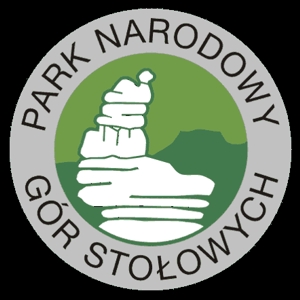
Kudowa Zdrój
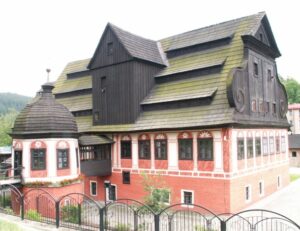
Duszniki Zdrój

Jaworzyna Śląska
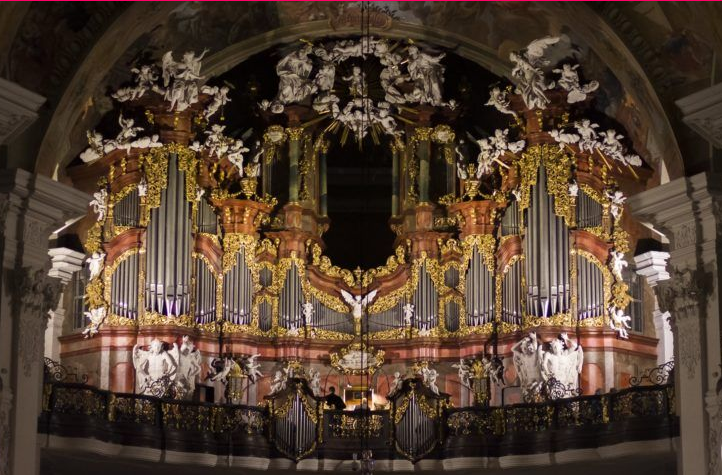
Organ music concerts
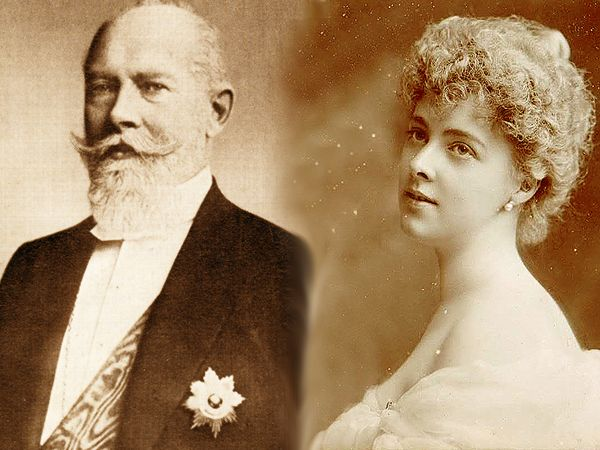
In July 3, 1943 Berlin radio reported the death of Princess Mary Theresa Olivia of Pless. She died in 1943 in Wałbrzych. The broadcast was recorded by the Associated Press. The Princess, a descendant of Henry III of England, married Prince Heinrich XV of Pless in London on December 8, 1891.
